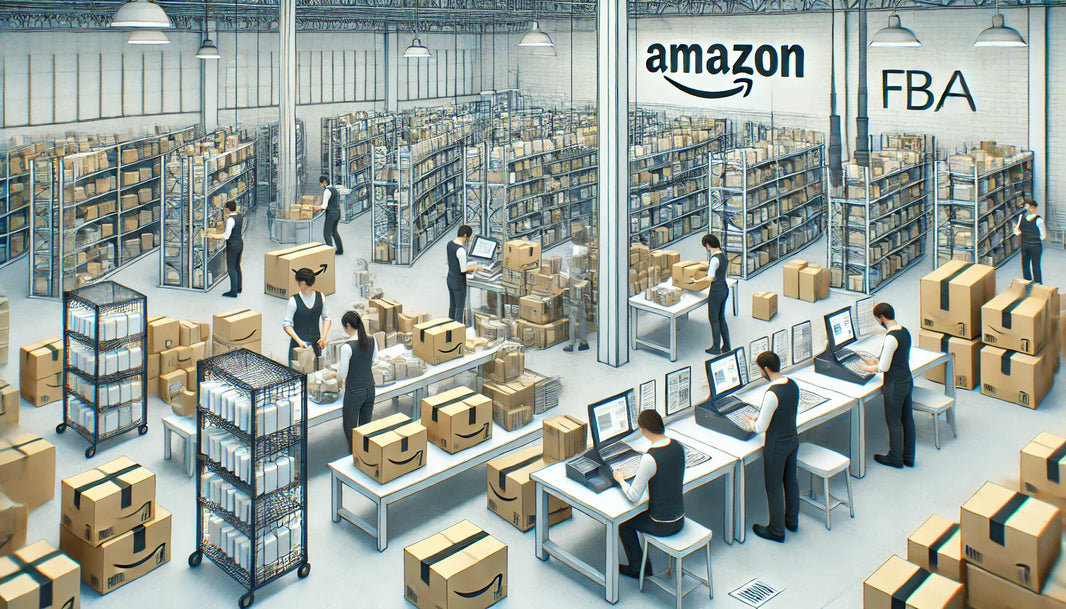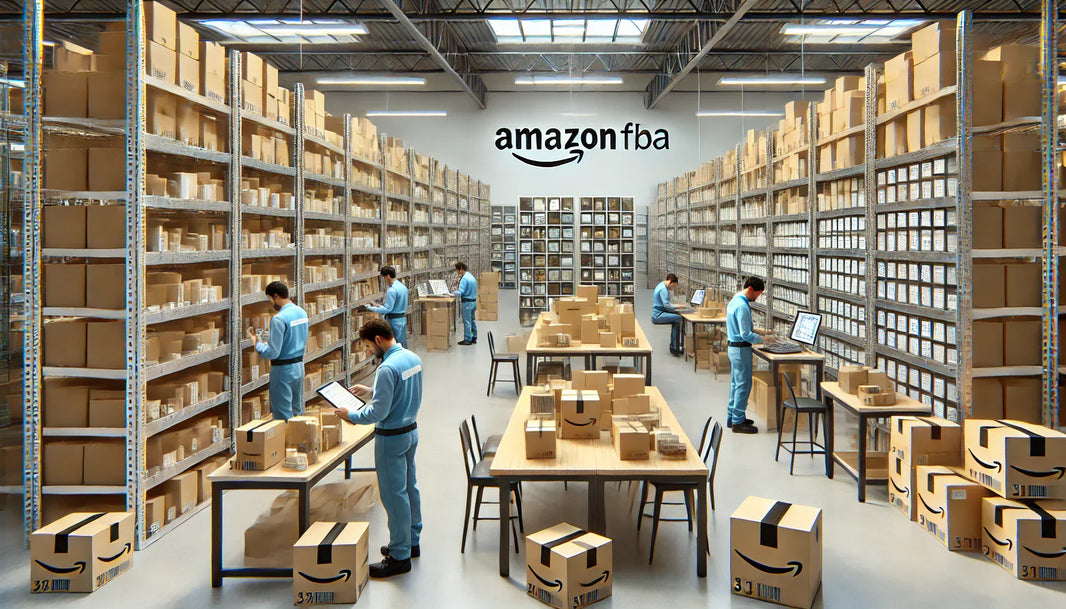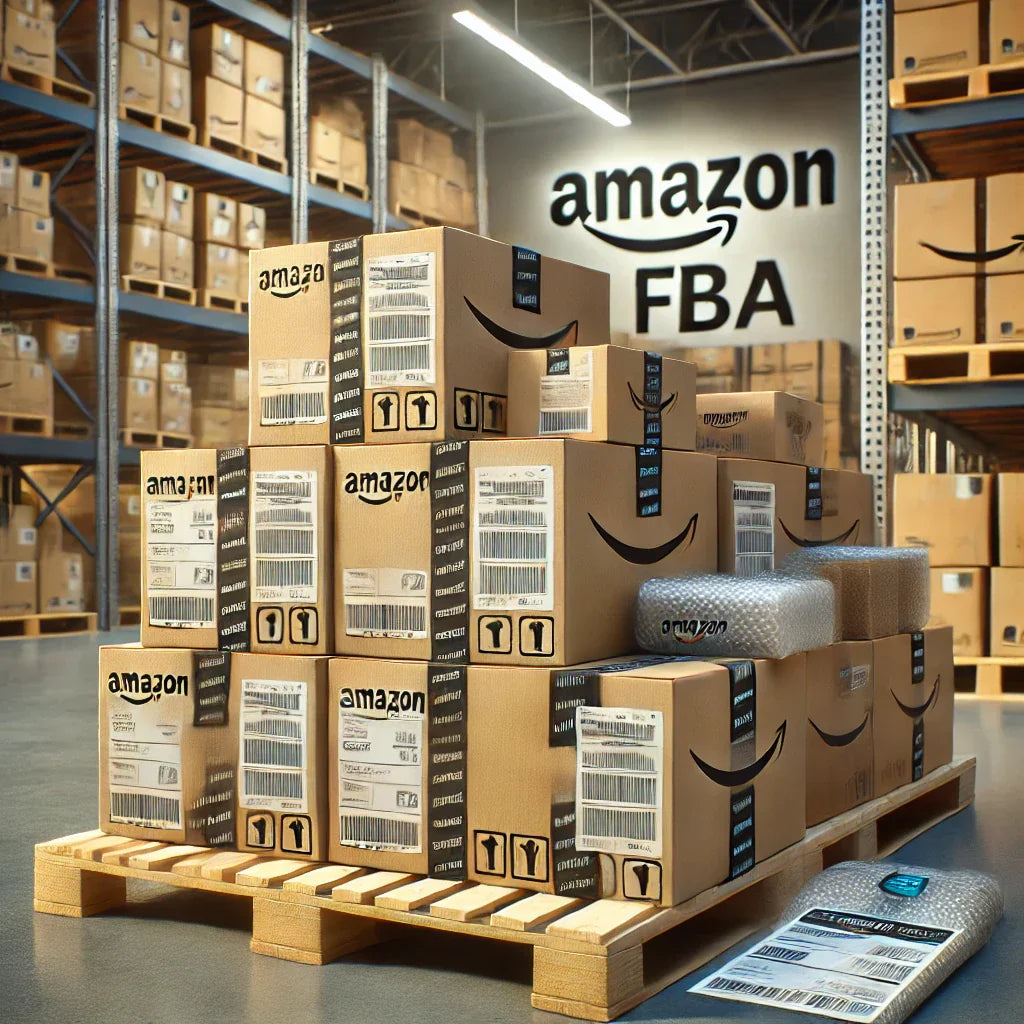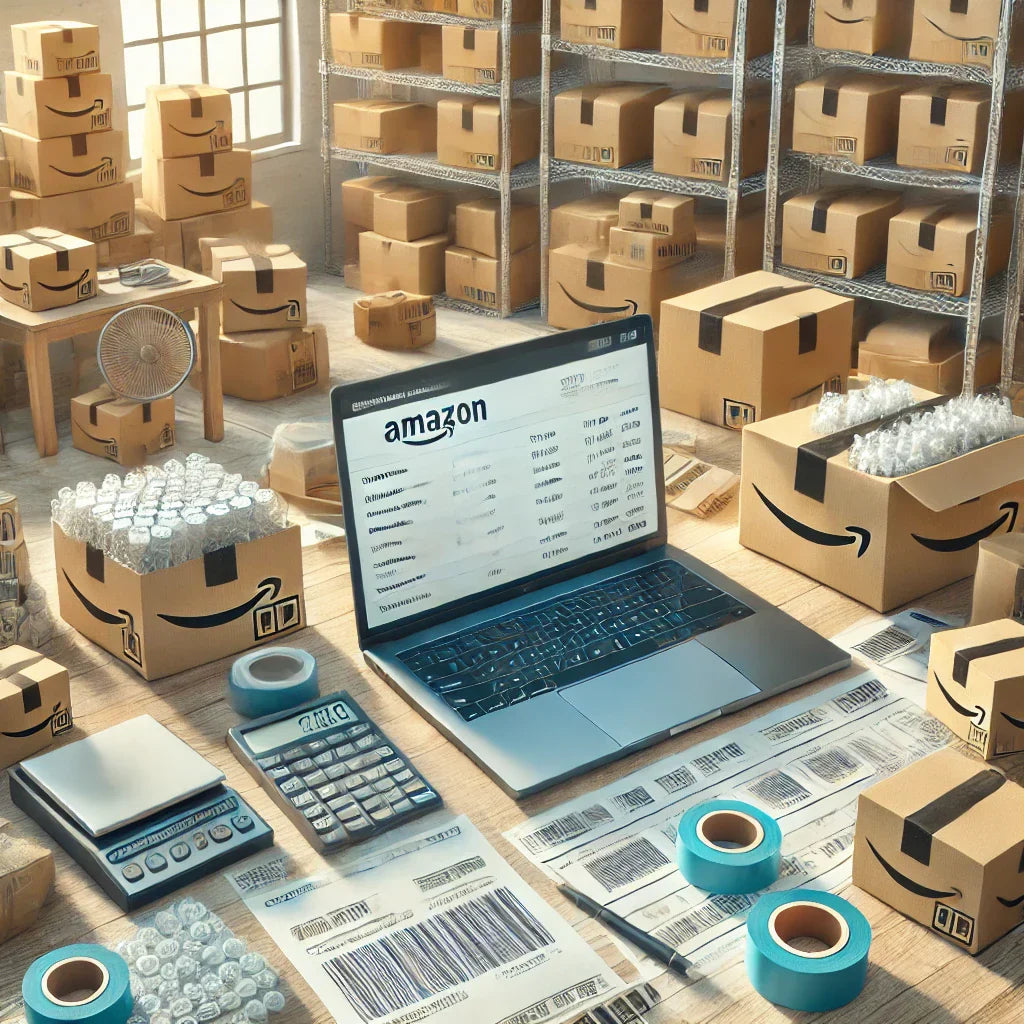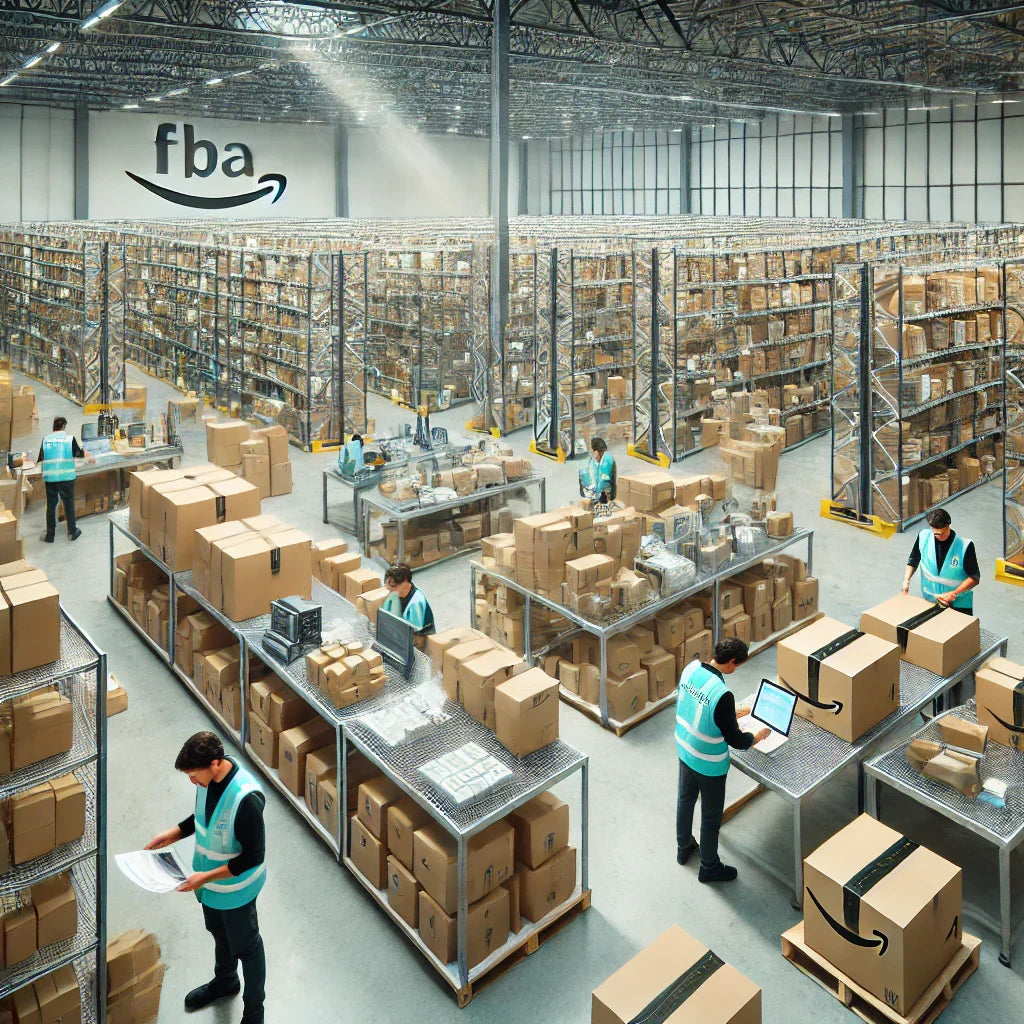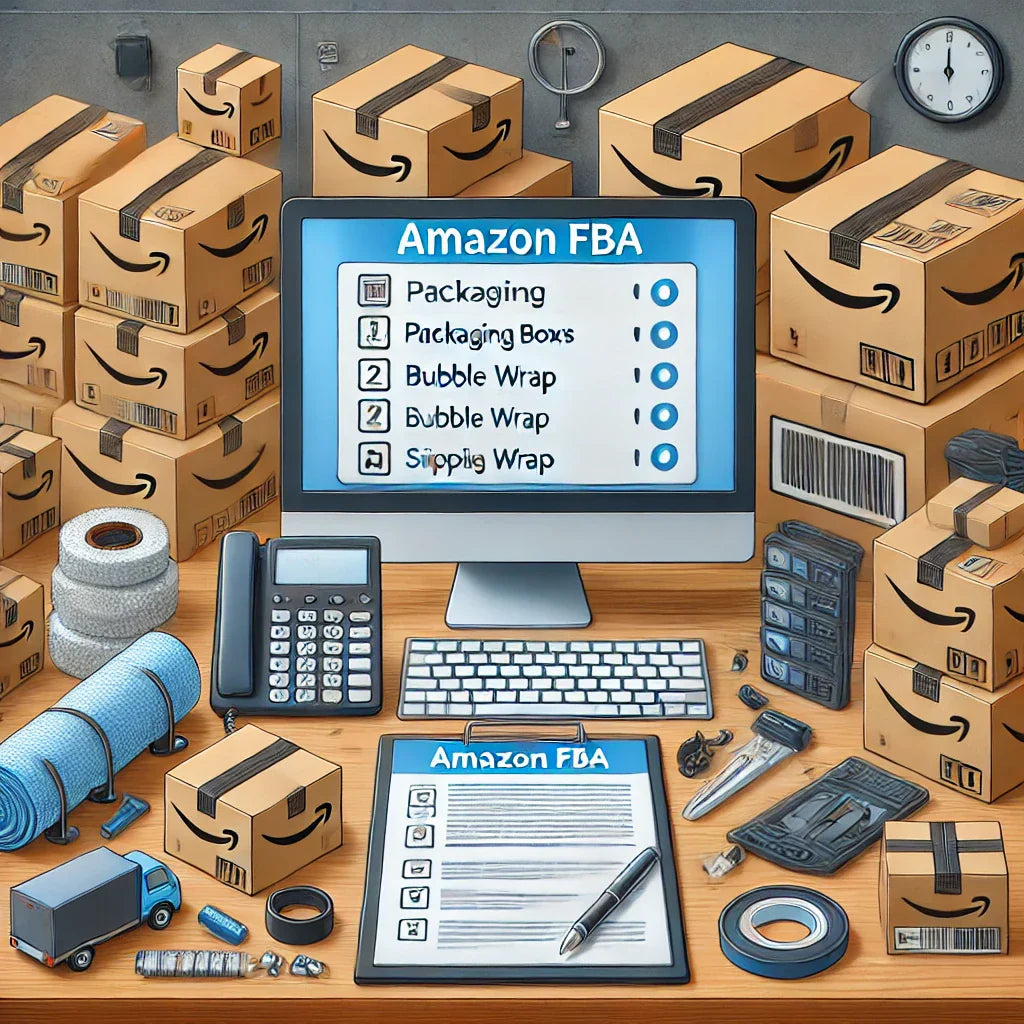Distribution centers have become essential components of modern supply chains, enabling businesses to manage the complex logistics of getting products from manufacturers to consumers efficiently. These facilities, often misconstrued as mere storage units, are sophisticated operations designed to optimize product flow, ensure inventory management, and enhance the overall efficiency of delivery processes. This comprehensive guide delves into the functions and benefits of distribution centers and highlights their importance in the logistics ecosystem.

Core Functions of Distribution Centers
1. Storage and Inventory Management
At the heart of every distribution center is its ability to store goods effectively. Unlike traditional warehouses that focus solely on long-term storage, distribution centers are optimized for the swift movement of goods. Advanced inventory management systems are integrated into their operations to maintain accurate records, manage stock levels, and minimize holding costs.
Efficient inventory management within these centers ensures that businesses can meet customer demands without overstocking, which ties up capital, or understocking, which risks losing sales. Automated systems, such as warehouse management software (WMS), track stock in real time, providing businesses with valuable data to make informed decisions on restocking, inventory turns, and supply chain strategies.
2. Order Processing and Fulfillment
One of the most critical functions of a distribution center is the processing and fulfillment of orders. This task involves receiving orders, picking the right items from inventory, packing them, and preparing them for shipment. Many distribution centers employ technologies such as robotics and conveyor systems to speed up the picking and packing processes, reducing human error and increasing efficiency.
Accurate and prompt order fulfillment has become a key differentiator for businesses, especially in the era of e-commerce, where customers expect fast and reliable delivery services. Distribution centers equipped with streamlined order processing capabilities contribute directly to customer satisfaction by minimizing delays and errors.
3. Cross-Docking Operations
Cross-docking is a distribution method used to transfer goods directly from incoming shipments to outbound trucks with minimal storage time. This process significantly speeds up the supply chain, reducing the need for inventory holding and improving cash flow. Distribution centers that incorporate cross-docking can move products more quickly from the point of origin to the consumer, benefiting industries that require fast-moving goods, such as retail and food distribution.
By implementing cross-docking, businesses can minimize the time goods spend within the center, lowering storage costs and speeding up the overall logistics cycle. This approach is particularly useful for perishable items or high-demand products that need to be on the market as soon as possible.
4. Product Sorting and Quality Control
Distribution centers also play a crucial role in ensuring that only high-quality products reach the customer. This involves inspecting shipments upon arrival for damage or discrepancies and conducting quality checks before items are shipped. Effective quality control helps maintain brand reputation by reducing the risk of defective products reaching consumers.
Product sorting is another essential function, where items are grouped and organized based on their destination, type, or priority. Advanced systems allow for intelligent sorting, which can adapt to changing demands and streamline dispatch operations. This process ensures that products are accurately shipped to the right destinations, reducing the chances of errors in delivery.
5. Reverse Logistics Management
With the rise of e-commerce, the need for efficient reverse logistics has increased. Distribution centers handle product returns, manage restocking, and facilitate the recycling or disposal of returned items. This process not only improves customer service by offering convenient returns but also supports sustainable practices by reducing waste.
Managing returns efficiently helps businesses maintain a positive customer experience while minimizing the impact on the supply chain. Reverse logistics ensures that returned products are either reintegrated into inventory or disposed of properly, contributing to a circular economy model that benefits both the environment and the company’s bottom line.
Key Benefits of Distribution Centers
1. Enhanced Supply Chain Efficiency
Distribution centers streamline the supply chain by centralizing the handling of goods. This centralization allows businesses to manage large volumes of products effectively and ensures timely distribution to retailers or end consumers. By optimizing processes such as storage, picking, and packing, distribution centers can reduce the time between order placement and delivery, enabling faster response times and improved customer satisfaction.
The strategic placement of distribution centers near major transportation hubs further enhances supply chain efficiency. Proximity to airports, seaports, and major highways reduces transit times and transportation costs, allowing businesses to serve larger areas more quickly.
2. Cost Reduction
By consolidating operations in a distribution center, companies can reduce logistics costs associated with inventory management, order fulfillment, and transportation. Modern distribution centers leverage technology to automate repetitive tasks, such as picking and packing, which lowers labor expenses and minimizes errors that could lead to costly returns or re-shipments.
Bulk storage and centralized distribution also result in lower per-unit shipping costs. The economies of scale achieved by processing large volumes of goods in one location help businesses negotiate better rates with shipping providers and minimize fuel consumption, contributing to overall cost savings.
3. Improved Customer Satisfaction
The benefits of distribution centers extend beyond operational efficiencies to impact customer experience. Quick and accurate order fulfillment leads to faster delivery times, which is a major factor in customer satisfaction. In competitive markets, such as e-commerce, the ability to offer rapid and reliable delivery can set a business apart from its competitors.
Distribution centers that prioritize quality control and efficient reverse logistics processes ensure that customers receive products in excellent condition and can return items without hassle. This level of service strengthens customer loyalty and increases the likelihood of repeat business.
4. Scalability and Flexibility
Distribution centers are designed to adapt to the changing needs of a business. Whether a company is expanding into new markets, launching new products, or managing seasonal fluctuations, distribution centers provide the scalability and flexibility needed to handle these changes seamlessly.
Advanced software systems enable real-time data analysis, allowing companies to adjust their inventory and order fulfillment strategies based on current market trends. This adaptability ensures that businesses remain agile and responsive, maintaining their competitiveness in dynamic markets.
Case Studies: The Impact of Distribution Centers
Case Study 1: A Leading Retailer's Strategic Expansion
A major retailer recently expanded its operations by adding regional distribution centers across the country. This strategic move reduced delivery times by up to 40%, leading to a significant boost in customer satisfaction. By leveraging automation within these centers, the company was able to increase order accuracy to 99%, demonstrating the effectiveness of investing in distribution center technology.
Case Study 2: Implementing Cross-Docking for Food Distribution
A food distribution company optimized its logistics by implementing cross-docking in its distribution centers. This change allowed them to move perishable items quickly from producers to grocery stores, minimizing spoilage and ensuring fresh products reached consumers faster. The reduction in storage time also contributed to lower operational costs, enhancing overall profitability.

Challenges Faced by Distribution Centers
1. High Initial Investment
Setting up a distribution center involves substantial initial costs, including land acquisition, construction, and the installation of advanced technological systems. While these investments pay off in the long term, they can be a barrier for smaller businesses looking to expand their logistics capabilities.
2. Complex Management
Managing a distribution center requires skilled personnel and sophisticated systems to ensure smooth operations. The integration of automation and data analytics tools adds a layer of complexity that can be challenging to manage without proper training and expertise.
3. Sustainability Concerns
The environmental impact of distribution centers, particularly their energy consumption and carbon footprint, is a growing concern. Companies are increasingly adopting sustainable practices such as using energy-efficient lighting, renewable energy sources, and eco-friendly packaging to mitigate these effects. Incorporating green logistics strategies can help distribution centers contribute positively to corporate sustainability goals.
Future Trends in Distribution Centers
1. Integration of Artificial Intelligence (AI)
AI is poised to revolutionize distribution center operations by enhancing predictive analytics, optimizing inventory management, and improving order fulfillment accuracy. AI-driven systems can forecast demand based on market trends, allowing businesses to pre-empt stockouts and maintain optimal inventory levels. This technology also supports the automation of repetitive tasks, freeing up human resources for more strategic roles.
2. Robotics and Automation
The use of robotics is becoming more prevalent in distribution centers, improving efficiency and reducing labor costs. Robots can handle tasks such as picking, packing, and sorting, which increases productivity and ensures consistency. Automated guided vehicles (AGVs) and drones are also being explored for internal transportation and inventory checks within distribution centers.
3. Sustainability Innovations
With a greater emphasis on reducing the carbon footprint, distribution centers are adopting sustainable practices. Green building designs, solar panels, and energy-efficient systems are now being integrated into facilities. Additionally, eco-friendly transportation solutions, such as electric trucks, are being considered to reduce emissions associated with the logistics process.
4. Collaborative Logistics
Collaborative logistics, where companies share distribution center space and resources, is gaining traction. This approach allows businesses to optimize costs and improve operational efficiency by pooling resources. It can be particularly beneficial for smaller companies that may not have the capital to invest in dedicated distribution centers.
In-Depth Roles of Technology in Distribution Centers
1. Warehouse Management Systems (WMS)
A Warehouse Management System (WMS) is essential in modern distribution centers. This software tracks inventory levels, locations, and movements, enabling the seamless flow of goods within the center. By incorporating barcoding and RFID (Radio Frequency Identification) technologies, WMS improves accuracy in stock counts and reduces manual errors. Advanced WMS platforms offer real-time tracking capabilities, allowing managers to make data-driven decisions about inventory replenishment and order processing.
With predictive analytics built into many WMS platforms, businesses can forecast demand more effectively, reducing instances of overstocking and understocking. This optimization helps maintain lower operational costs while ensuring customer orders are fulfilled promptly.
2. Automated Storage and Retrieval Systems (AS/RS)
Automated Storage and Retrieval Systems (AS/RS) are a game-changer for distribution centers aiming to maximize space efficiency and speed. These systems use robotics to store and retrieve items without human intervention. AS/RS units are particularly beneficial for handling high-density storage areas, where manual picking could be inefficient and time-consuming.
The implementation of AS/RS allows distribution centers to handle a higher volume of orders with increased accuracy, boosting overall productivity. By minimizing the need for physical labor in repetitive tasks, AS/RS also frees up human resources for roles that require critical thinking and customer service management.
3. Internet of Things (IoT) in Inventory Management
IoT technology is enhancing the capabilities of distribution centers by providing a network of interconnected devices that communicate in real-time. Sensors placed on pallets and containers can monitor the condition of goods, including temperature and humidity levels for sensitive products. This technology is especially important in industries such as pharmaceuticals and food, where product quality is closely tied to storage conditions.
The integration of IoT allows managers to gain detailed insights into the movement and status of products throughout the center. Alerts and notifications can be set up to inform operators of potential issues, such as temperature deviations, enabling quick responses that prevent product damage and loss.
4. Blockchain for Improved Transparency
Blockchain technology is beginning to make its way into distribution centers, offering unparalleled transparency and security in supply chain operations. By using blockchain, distribution centers can provide immutable records of transactions, ensuring the traceability of goods from the point of origin to the final destination. This feature is particularly useful in sectors where product authenticity and compliance are critical, such as the pharmaceutical industry.
Blockchain enhances trust between business partners and consumers by providing verifiable data regarding a product's journey. This transparency helps reduce fraud and ensures that customers receive genuine products.
Operational Strategies for Maximizing Efficiency
1. Lean Warehousing Practices
Lean warehousing aims to minimize waste in distribution center operations while maximizing value to the customer. This strategy involves continuous process improvement through methods like Kaizen, which encourages small, incremental changes to enhance workflow efficiency. Lean practices include optimizing layout designs to reduce travel time for workers and implementing automated solutions to handle repetitive tasks.
By adopting lean methodologies, distribution centers can reduce operational costs, improve employee productivity, and enhance the overall speed of order processing. The reduction of non-value-adding activities allows resources to be focused on areas that directly contribute to customer satisfaction.
2. Slotting Optimization
Slotting refers to the strategic placement of items within a distribution center to streamline picking and packing operations. By analyzing product data and customer order trends, managers can determine the most efficient layout for their facilities. Frequently picked items are placed in easily accessible locations, reducing the time needed for employees or robotic systems to fulfill orders.
Effective slotting optimization not only speeds up order processing but also reduces the risk of picking errors. Advanced slotting software can simulate various layout configurations to find the most effective setup based on real-time data.
3. Flexible Workforce Management
Managing labor effectively is crucial for distribution centers, particularly during peak periods when order volumes spike. Flexible workforce strategies, such as employing a combination of full-time, part-time, and temporary workers, help distribution centers adapt to seasonal demands. Cross-training employees to handle multiple roles can further boost workforce flexibility, ensuring that operations remain smooth even if certain team members are unavailable.
Distribution centers that leverage workforce management software can track employee productivity, optimize shift schedules, and forecast labor needs. This level of planning reduces overtime costs and helps maintain employee satisfaction by preventing burnout during busy periods.
Sustainability and Eco-Friendly Practices in Distribution Centers
1. Energy-Efficient Facility Designs
Modern distribution centers are incorporating sustainable practices to reduce their environmental impact. Energy-efficient lighting systems, such as LED fixtures, significantly lower electricity consumption compared to traditional options. Additionally, distribution centers are utilizing natural lighting and automated light controls to further optimize energy use.
Another trend is the installation of solar panels on rooftops, which can help facilities generate their own renewable energy. This reduces dependence on non-renewable energy sources and lowers operational costs over time. Distribution centers that adopt energy-efficient designs contribute to a company’s broader sustainability goals and appeal to environmentally conscious customers.
2. Eco-Friendly Packaging Solutions
To reduce the environmental impact associated with packaging, many distribution centers are adopting eco-friendly materials and reusable packaging solutions. Corrugated cardboard, biodegradable plastics, and recycled materials are increasingly being used to minimize waste. These measures help companies align with green logistics principles and reduce their carbon footprint.
Using sustainable packaging not only supports the environment but also improves a company’s reputation. Consumers are more likely to support businesses that demonstrate environmental responsibility, making eco-friendly practices an essential part of modern distribution center operations.
3. Green Transportation Initiatives
The transportation sector contributes significantly to carbon emissions, so many distribution centers are investing in green transportation methods to reduce their impact. This includes transitioning to electric or hybrid delivery trucks, optimizing delivery routes for fuel efficiency, and partnering with eco-friendly logistics providers.
Innovative technologies, such as route optimization software, help distribution centers plan the most efficient paths for delivery vehicles. This reduces fuel consumption and minimizes the environmental impact of transporting goods. Green transportation initiatives are essential for companies that aim to improve their sustainability credentials while maintaining efficient operations.

The Human Factor in Distribution Centers
1. Employee Training and Development
Effective training programs are essential for maximizing productivity and ensuring the smooth operation of distribution centers. Employees need to be well-versed in using modern technologies, such as automated systems and WMS platforms. Comprehensive training also helps staff adapt quickly to new processes and equipment, reducing the learning curve and potential downtime.
Ongoing development opportunities not only improve employee performance but also contribute to job satisfaction and retention. A skilled workforce can adapt to changing business needs, making the distribution center more resilient to disruptions.
2. Ensuring Workplace Safety
Workplace safety is a top priority in distribution centers, where employees often work alongside heavy machinery and automated equipment. Implementing strict safety protocols and providing personal protective equipment (PPE) help minimize the risk of accidents. Regular safety training sessions and drills reinforce the importance of maintaining safe practices in high-paced environments.
Technological advancements, such as sensors and automated stop mechanisms, enhance safety by preventing collisions and alerting operators to potential hazards. Creating a culture that prioritizes safety not only protects employees but also reduces the risk of operational downtime due to accidents.
3. Employee Well-Being Programs
To maintain a productive workforce, distribution centers are increasingly focusing on employee well-being. Programs that address physical and mental health can improve overall job satisfaction and reduce turnover. Flexible work hours, access to wellness resources, and ergonomic workplace designs are examples of initiatives that support employee well-being.
The investment in well-being programs can lead to higher productivity, fewer sick days, and a more positive work environment. This, in turn, boosts the reputation of the distribution center as an employer and helps attract top talent.
The Role of Distribution Centers in Global Supply Chains
Distribution centers are not just local hubs; they are integral to global supply chains. With the expansion of e-commerce and international trade, distribution centers must navigate complex logistics involving cross-border regulations, varying transport modes, and multi-lingual communications.
1. Adapting to International Regulations
Distribution centers that serve international markets must comply with a range of regulations related to import/export duties, documentation, and product standards. This requires robust processes for tracking compliance and ensuring that all goods meet local and international requirements.
Technology, such as customs management software, can help distribution centers stay updated on changing regulations and automate the documentation process. This reduces delays at borders and ensures smooth international transactions.
2. Supply Chain Visibility
Global supply chains require end-to-end visibility to function efficiently. Distribution centers play a crucial role in this by providing real-time data on inventory levels, order status, and shipment tracking. Integrating advanced tracking systems and collaborating with logistics partners allows for seamless data sharing across the supply chain.
Supply chain visibility improves collaboration between manufacturers, suppliers, and retailers, enabling quicker responses to disruptions. It also provides transparency for consumers, who are increasingly interested in tracking their purchases from production to delivery.
3. Strategic Network Planning
Distribution centers are strategically located to optimize the flow of goods. For companies operating globally, it is essential to map out an efficient network of centers that minimizes transit times and reduces transportation costs. Factors such as proximity to major ports, accessibility to transportation routes, and local labor markets are considered when planning the locations of distribution centers.
This strategic approach ensures that products can reach global markets more quickly and efficiently, which is critical for businesses with time-sensitive goods or those looking to expand their international presence.
Resilience and Risk Management in Distribution Centers
1. Disaster Preparedness
Distribution centers must have strategies in place to respond effectively to unexpected disruptions, such as natural disasters, labor strikes, or supply chain blockages. Comprehensive business continuity plans (BCPs) ensure that operations can be restored with minimal downtime. Key components of these plans include backup power solutions, such as generators or solar-powered systems, and pre-established alternative distribution routes.
Partnering with third-party logistics (3PL) providers can offer additional support during crises, providing flexibility and resources that internal teams may lack. By having these contingency measures in place, distribution centers can safeguard against financial losses and maintain customer trust, even during turbulent times.
2. Risk Mitigation Through Diversification
One of the main strategies for minimizing risk in distribution center operations is diversification. This applies not only to the variety of suppliers and transport partners but also to the distribution center network itself. Companies that rely on multiple distribution centers spread across different geographic areas are better positioned to withstand localized issues, such as weather-related shutdowns or political unrest.
Diversifying inventory sources and maintaining relationships with multiple suppliers ensures a steady flow of goods even if one supply chain node experiences disruptions. Such strategies bolster the resilience of the distribution center, allowing it to continue operations and fulfill orders without significant delays.
3. Cybersecurity Measures
As distribution centers increasingly adopt digital solutions, the risk of cyber-attacks becomes more pronounced. Protecting data and operations requires robust cybersecurity protocols, including firewalls, intrusion detection systems, and secure networks. Regular software updates and employee training on cybersecurity best practices further enhance the center’s ability to defend against potential breaches.
The integration of Internet of Things (IoT) devices within distribution centers adds another layer of risk, as these connected systems can be vulnerable if not properly secured. Employing end-to-end encryption and implementing multi-factor authentication for system access are key measures for maintaining security. Cyber resilience ensures that operations remain protected from data breaches that could compromise inventory information, customer data, and overall business functionality.
Global Trends Shaping the Future of Distribution Centers
1. Adoption of Smart Technologies
The future of distribution centers is being shaped by the rapid adoption of smart technologies. From AI-driven robotics that handle order picking to drones used for inventory checks, these technologies are revolutionizing traditional practices. AI algorithms can optimize the picking routes, minimize energy usage, and adapt to fluctuating demand patterns in real-time.
Smart shelves, equipped with sensors that monitor stock levels, further enhance inventory management by providing alerts for restocking or flagging errors. The integration of such advanced technology improves accuracy, reduces labor costs, and speeds up the fulfillment process, all while supporting sustainable practices by minimizing waste.
2. Sustainability and Circular Logistics
Sustainability is no longer optional—it’s a necessity. Distribution centers are aligning their strategies with environmentally conscious practices to reduce their carbon footprint. Circular logistics, which focuses on the reuse, refurbishment, and recycling of products, is gaining traction. Distribution centers are incorporating programs that handle returned goods in a way that maximizes resource recovery, such as sorting returned items for resale or repurposing damaged products.
Further, energy-efficient infrastructure is becoming standard, featuring solar panels, advanced HVAC systems, and sustainable building materials. The push toward electric-powered forklifts and battery storage systems adds another layer to these sustainability efforts, promoting cleaner and greener logistics operations.
3. Omnichannel Distribution and Fulfillment
The shift toward omnichannel retailing is reshaping the role of distribution centers. Consumers now expect seamless integration between online and in-store shopping experiences, and distribution centers must adapt to this reality by supporting various fulfillment methods, such as click-and-collect, same-day delivery, and traditional shipping.
To meet these needs, many centers are evolving into hybrid models that handle both e-commerce and retail distribution within the same facility. This approach requires an adaptable infrastructure capable of processing a high volume of orders with differing fulfillment requirements. By leveraging data analytics, distribution centers can forecast demand for different channels and adjust operations accordingly, improving inventory allocation and reducing delays.
Technological Integration for Enhanced Efficiency
1. Augmented Reality (AR) for Workforce Training
Training employees in distribution centers is becoming more advanced with the use of augmented reality (AR). AR systems provide a hands-on training experience that helps new employees learn complex tasks more effectively. By overlaying digital instructions onto physical environments, AR enhances understanding and retention, reducing the time it takes for new staff to become proficient in their roles.
This technology also assists experienced employees in performing their tasks more efficiently. For example, AR can guide workers through optimal picking paths, display item details, and verify product selections, thus reducing picking errors and enhancing speed.
2. Predictive Maintenance with IoT and AI
Ensuring that equipment runs smoothly is critical for uninterrupted distribution center operations. Predictive maintenance, powered by IoT and AI, allows distribution centers to preemptively address potential machinery issues before they become problematic. IoT sensors monitor the condition of equipment in real-time, sending data to AI systems that analyze patterns and predict when maintenance is needed.
This proactive approach reduces unplanned downtime and extends the life of equipment, translating to significant cost savings. It also enhances safety by preventing machinery failures that could pose risks to employees.
3. Digital Twins for Operational Optimization
Digital twin technology is a cutting-edge solution being adopted by forward-thinking distribution centers. By creating a virtual replica of the facility, managers can simulate different scenarios and optimize processes without disrupting real-world operations. Digital twins can model various aspects of the center, from inventory flows and layout changes to the impact of introducing new technologies.
These simulations allow decision-makers to identify inefficiencies and test improvements before implementing them in the actual facility. This strategic tool helps minimize risks associated with changes and maximizes resource allocation, leading to continuous operational enhancement.

Enhancing Customer Experience Through Distribution Centers
1. Real-Time Order Tracking
The modern consumer expects transparency and convenience when shopping online or in-store. Distribution centers that offer real-time order tracking enable businesses to meet these expectations. By integrating advanced tracking systems and GPS technology, distribution centers provide customers with updates on the status and location of their shipments, fostering trust and improving overall satisfaction.
The availability of real-time data helps businesses manage customer inquiries more efficiently, allowing customer service teams to respond to questions about delivery timelines with accurate information.
2. Personalized Delivery Options
Personalized delivery options are becoming an industry standard, as consumers demand greater flexibility. Distribution centers that can handle requests for specific delivery times, same-day shipping, or even sustainable packaging choices provide a competitive advantage for the companies they serve. This level of customization is made possible through sophisticated data analytics and automated scheduling systems that adapt to customer preferences.
Offering personalized delivery services enhances brand loyalty and encourages repeat business, as customers are more likely to choose a provider that meets their individual needs.
Addressing Labor Shortages in Distribution Centers
1. Leveraging Automation to Supplement Workforce Gaps
One of the major challenges facing distribution centers is the shortage of skilled labor. To address this, many centers are investing in automation to handle labor-intensive tasks. Automated systems for picking, packing, and transporting goods reduce the dependency on human labor and ensure that operations continue smoothly even during periods of workforce shortages.
Automation not only fills labor gaps but also enhances efficiency and accuracy, helping distribution centers manage high volumes of orders with fewer employees.
2. Workforce Engagement and Retention Strategies
While automation plays a significant role in addressing labor shortages, the human element remains critical. Distribution centers are focusing on creating a positive work environment to attract and retain employees. Competitive wages, career development programs, and comprehensive training sessions are essential components of these strategies.
Employee recognition programs and performance incentives are also effective in boosting morale and maintaining high productivity levels. By showing employees that their contributions are valued, distribution centers can foster loyalty and reduce turnover.
3. Collaborative Robots (Cobots)
Collaborative robots, or cobots, are designed to work alongside human employees to enhance productivity. Unlike traditional robots, cobots are equipped with sensors that enable them to interact safely with people, making them ideal for assisting with repetitive tasks such as packing or sorting. Cobots support workers by lifting heavy items, reducing physical strain, and improving overall job satisfaction.
The use of cobots allows employees to focus on more complex tasks that require critical thinking and decision-making, maximizing the potential of both human and robotic contributions to the distribution center’s operations.
Data-Driven Decision Making
1. The Power of Big Data Analytics
Data analytics has become an essential tool for distribution centers aiming to optimize operations. Big data provides insights into customer buying behavior, peak order times, and inventory turnover rates. By analyzing this data, distribution centers can make informed decisions that enhance efficiency, such as adjusting staff schedules during busy periods or realigning stock based on demand forecasts.
Predictive analytics takes this a step further by using historical data to forecast future trends. This capability allows distribution centers to prepare for shifts in market demand and allocate resources accordingly, minimizing the risk of stockouts or overstocking.
2. Performance Metrics and KPIs
Key performance indicators (KPIs) play a significant role in evaluating the effectiveness of distribution center operations. Common KPIs include order accuracy, pick rate, inventory turnover, and on-time delivery rates. Regularly monitoring these metrics allows distribution centers to identify areas for improvement and implement targeted strategies.
Advanced reporting tools can aggregate data and present it in a user-friendly dashboard, making it easier for managers to track progress and make data-driven adjustments. By focusing on measurable outcomes, distribution centers can continuously refine their operations and achieve higher levels of efficiency.
The Role of Sustainability Metrics and Reporting
1. Tracking Environmental Impact
Distribution centers are increasingly expected to demonstrate their commitment to sustainability through measurable data. Tracking key environmental metrics, such as energy consumption, water usage, and carbon emissions, allows distribution centers to understand their ecological footprint. Regular reporting on these metrics not only helps in meeting regulatory requirements but also showcases a commitment to corporate social responsibility (CSR).
These sustainability metrics are often tracked using specialized software that consolidates data from various operational activities. By analyzing this data, distribution centers can identify areas where energy use can be reduced, waste can be minimized, and processes can be streamlined to align with green logistics principles.
2. Sustainable Certifications and Industry Standards
Achieving industry-recognized certifications, such as LEED (Leadership in Energy and Environmental Design), signals that a distribution center meets stringent sustainability standards. LEED-certified facilities are designed to use energy efficiently, optimize water management, and reduce overall waste. Similarly, compliance with ISO 14001 for environmental management systems demonstrates a commitment to minimizing environmental impact while maintaining operational efficiency.
Earning these certifications not only helps distribution centers attract eco-conscious clients but also positions them as leaders in the adoption of sustainable practices. These standards provide a structured framework for continuous improvement in sustainability initiatives.
Expansion Strategies for Distribution Centers
1. Scaling Up Operations
When a business experiences growth, scaling up distribution center operations becomes necessary to maintain service levels. This expansion could involve increasing the physical size of the facility or incorporating advanced automation systems to handle larger volumes of inventory. Expanding a distribution center often requires careful planning to minimize disruption to existing workflows.
Companies must assess the cost-benefit ratio of expansion investments, balancing immediate capital expenditures against long-term gains in efficiency and customer satisfaction. Factors such as geographical location, access to transport routes, and proximity to major markets play critical roles in determining how and where to expand.
2. Multi-Facility Coordination
Managing multiple distribution centers requires effective coordination to optimize resource allocation, reduce transit times, and maintain balanced inventory levels across the network. This is where robust supply chain management (SCM) software becomes indispensable. SCM systems enable centralized monitoring of inventory, order fulfillment, and shipment schedules across all facilities.
Multi-facility coordination ensures that products are dispatched from the closest distribution center to the customer, reducing shipping times and costs. Additionally, it provides flexibility in managing unexpected disruptions, as inventory can be reallocated from other facilities when needed.
Advanced Inventory Strategies
1. Just-In-Time (JIT) Inventory Management
The Just-In-Time (JIT) approach minimizes excess inventory by aligning the receipt of goods with immediate demand. While traditional inventory methods rely on holding large amounts of stock, JIT ensures that goods arrive just as they are needed for order fulfillment. This method reduces storage costs and minimizes the risk of obsolescence, but it requires highly coordinated supplier relationships and precise demand forecasting.
Distribution centers employing JIT strategies leverage predictive analytics and real-time data to maintain inventory at optimal levels. This approach reduces waste, cuts down on holding costs, and ensures that the center remains agile in responding to market changes.
2. Safety Stock and Buffer Inventory
While JIT focuses on minimizing inventory levels, having a buffer of safety stock is a safeguard against unexpected demand spikes or supply chain disruptions. Safety stock acts as a cushion that ensures order fulfillment continues smoothly when supply lines are delayed or consumer demand exceeds forecasts.
Distribution centers balance safety stock levels to avoid tying up capital in excess inventory while ensuring they have enough to prevent stockouts. This balance is often achieved using data analytics that considers historical data, seasonal trends, and lead times for replenishment.
![]()
Conclusion
Distribution centers are indispensable for modern businesses looking to maintain a competitive edge in today’s fast-paced market. They serve as the backbone of efficient logistics, enabling the seamless movement of products from manufacturers to consumers. With functions such as inventory management, order processing, and cross-docking, distribution centers provide numerous benefits, including enhanced efficiency, cost savings, and improved customer satisfaction. While challenges such as high initial investment and sustainability concerns remain, advancements in technology and a shift toward collaborative and eco-friendly practices are set to shape the future of distribution centers. For businesses, understanding and leveraging these facilities is key to sustaining growth and delivering superior service in an increasingly demanding market.
Read More
- The Role of Regional Distribution Centers in Modern Supply Chains
- A Closer Look at Academy Distribution Centers: Key Features and Operations
- DHL Distribution Centers: Global Logistics at Scale
- The Advantages of Using 3PL Distribution Centers for Businesses
- How Distribution Centers Enhance Efficiency in Warehousing and Logistics
- Choosing the Right Distribution Center for Your Business Needs


